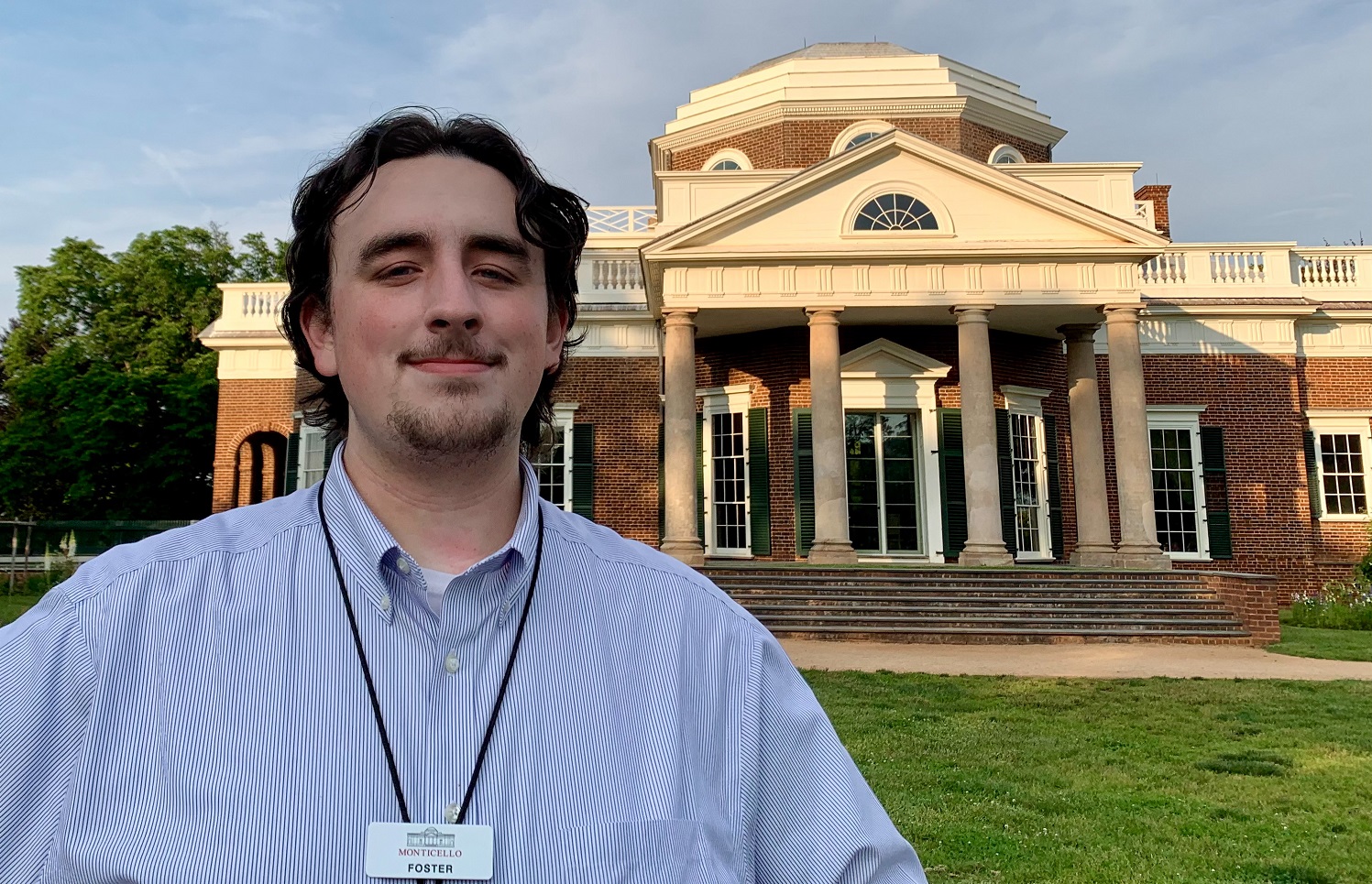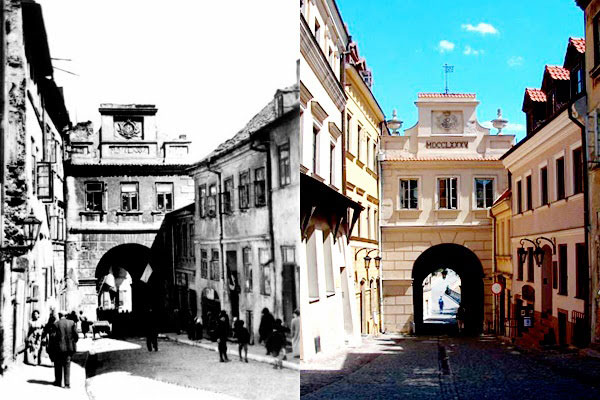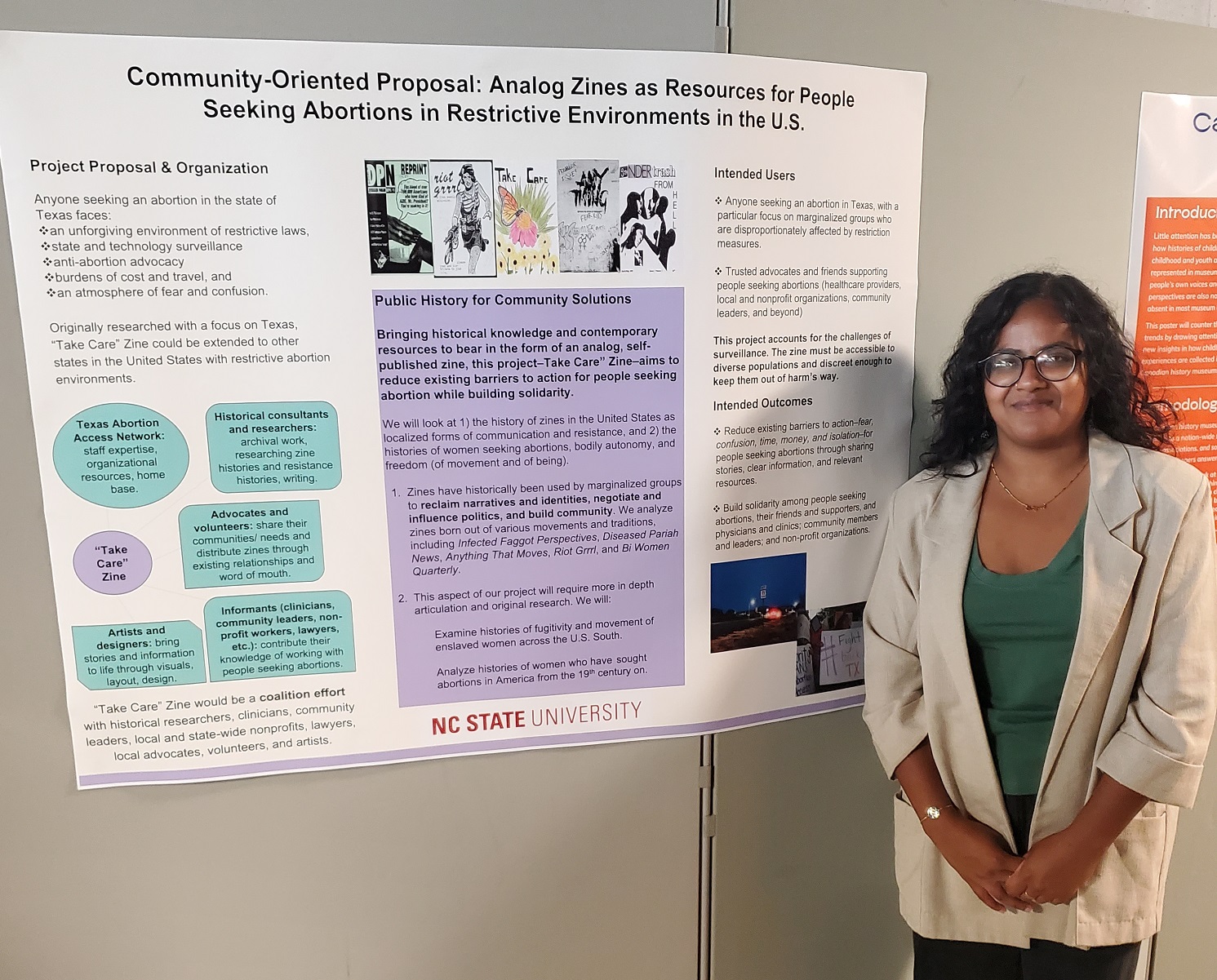Meet our Alumni: Kathleen Gleditsch,’14
Kathleen Gleditsch graduated from the Public History MA program in 2014. Post graduation, Gleditsch worked at Mordecai, Oak View and Somerset Place State Historic Site as Assistant Site Manager. In December 2019 she was hired as Head of Volunteer and Intern Services at the North Carolina Museum of History (NCMOH).
 Tell me about your job as Head of Volunteer and Intern Services at NCMOH.
Tell me about your job as Head of Volunteer and Intern Services at NCMOH.
I handle the recruitment, training, management, and retention of our volunteer docents, and I’m also the coordinator for volunteers across the museum as a whole, although most of our volunteers are docents. The focus is on recruiting people to engage visitors and school groups with history in the galleries using discovery carts, which are little carts that have teachable and tangible objects on them.
How did the pandemic affect your job?
I was just learning the job when we were sent home. The only recruitment we’ve done since 2020 has been virtual. So this is my first real fiscal year in this job recruiting new volunteers. We just recruited and started training 38 new trainees into our discovery cart training program, and will be training them on Mondays through February.
So how does that work with training the docents? Do they have a specific script that they have to follow?
We have manuals for each of the carts and it’s really just the historical background, the context for the objects, the topics that we’re covering, the people we’re covering, etc. It’s not really a tour – it’s more of a conversation with the visitors over these objects. It’s much more informal and less intimidating than giving an hour length tour in the galleries. Tour training has been on hold due to renovation planning, plus the layout of our exhibits, number of interactives, and level of visitation make the gallery carts more feasible than guided tours.

“Doing it the Hard Way” workshop
Tell me more about the discovery carts.
We have thirteen, although a few of them are under renovation right now. I’m going to be training the new docents on ten of them and each of them is a sub topic on North Carolina history. For instance, we have an edible NC cart – it’s just about foods born here in North Carolina, and we have a little game we play with the visitors where they try to match up the food with the town that it was born in. There are different little facts and hints that the docent can share with the visitors to try to lead them in the direction of where that food was born. We have other carts that tie more specifically into our chronological exhibit. Our main exhibit, The Story of North Carolina, covers 15,000 years of North Carolina history up into the 1960s and most of the carts have something to do with some part of that exhibit. We have a farm tours cart that ties into the antebellum period of the exhibit. We have a “New Ways to Move” cart that deals with how transportation changed in the 20th century from the automobile to exploring space. The carts have a lot of content, but we do that to give the docents more control over what they talk about. They have choices depending on their own interests and on what the audience that they’re working with are responding to. This is an easier way to pull people in and it’s very flexible. We don’t make the docents stay on some kind of a regular schedule every week or even every month. We just ask them when they want to come in and do the carts. And the shifts are two hours.
What types of people volunteer?
A lot of retired folks, but I am proud to say that this go round we do have a good number of working professionals who are still with us in our training right now. So fingers crossed, they’ll stick with us to the end, but that’s a demographic that we always struggle with – the mid-level professionals – because it can be difficult to work volunteering into their full-time schedules.
Is it difficult to get and keep volunteers and are there some who have been there for years?
We do we have some docents who have been here 20 plus years. We haven’t really struggled with recruitment, but at the same time, we haven’t really been intentionally recruiting because of COVID and because of a planned renovation with its constantly shifting timeline. I was able to recruit this year because the renovation was delayed.
Do you ever get younger people who are considering a career in public history and want to volunteer as a docent to get experience?
We have a few high school students although they can’t make as long a commitment to our program; we like giving them the opportunity to become involved as long as they can and learn more about working in a museum. We also have some rising college students, recent graduates and graduate students interested in museum careers. I also run the internship program for the museum so if you have any students who want to do internships, they come to me.
What does a typical day looks like for you?
On a typical day, I spend much of my time planning and preparing for docent meetings, trainings, and functions, responding to docent queries and all of the administrative tasks that go with that. I also recruit, interview, and plan enrichment activities for our interns. During the summer, I interview all of the new potential docents. Right now I’m working on updating training materials. I have training for the new docents every Monday, and we do that at 9:30 in the morning and 6:30 in the evening so my Mondays are pretty stacked at this point. We have a travel grant program where we allot funding donated by the NC Museum of History Associates to the eligible schools with priority going to Title I schools who otherwise might not be able to come to the museum. We had over 300 applications from schools across North Carolina this year that I must review this month for potential travel grant funding.
What experience did you have prior to joining our Public History MA program?
I have a bachelor’s degree in archaeology and anthropology. After I graduated, I had a few gap years. I actually worked at Macy’s and Belks and Bon Ton, but I think that doing customer service did serve me because being a public historian is a lot of visitor services no matter what you do in this field. I think when students see a curator or collections manager, they see someone who’s behind the scenes, but they do still have to interface with audiences, they still have to do presentations, work with donors, and different stakeholders trying to get funding for things. So no matter what you’re doing, even if you are kind of behind the behind the scenes role, you’re still going to need that public end of public history.
How did NC State History Department play a role in your career pathway?
I am really proud of the fact that I was a graduate student in this program. I think it prepared me very well. It gave me a great background for doing public history in this state and I made a lot of connections. I did an internship at Mordecai while I was there so right after I graduated, I started working part time at Mordecai Historic Park. The conversations that we had in our classes, we’re still having in this field. The workload with my job now, mimics the workload as a graduate student – it’s very task oriented. When I was at Somerset, you had to be there 8:30 to 5 every day for the visitors. It was a big job and it could be a lot of after hours stuff at times with events, etc, but this job is more an exercise in time management like when I was a graduate student. I could be here every day and I would never run out of things to do so you have to really manage your time and set boundaries because with this job, there’s no shutoff valve.
What would you say to a prospective student who’s considering getting an MA in public history or to current Public History students?
You really should be trying to do volunteer work and network with professionals in this field. I would highly recommend becoming a member of North Carolina Museums Council – they have student memberships. Go to the conferences, go to any other public history related networking conferences. We have had current students and recent graduates reach out to us in the past to learn more about our career paths and the museum field. There are staff here who take mentoring the next generation of public historians very seriously. And if there’s a museum that you have your heart set on, try to get your foot in the door somehow, by volunteering and talking to people there. And once you have your degree, and are on the job market, make sure you do your due diligence and don’t be afraid to advocate for yourself and really do back end networking with people and finding out the culture of a place, finding out about workloads and being able to balance your work and your life and the salary involved.
- Categories:


